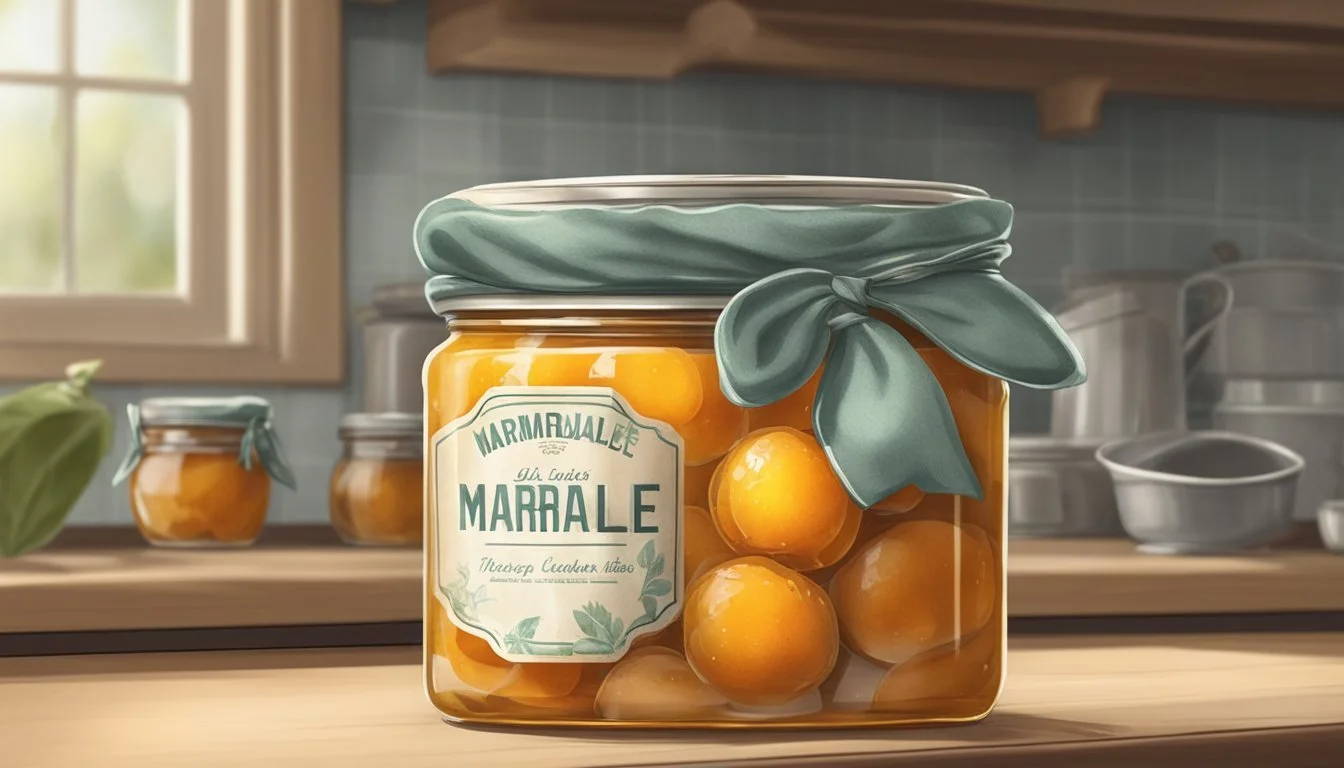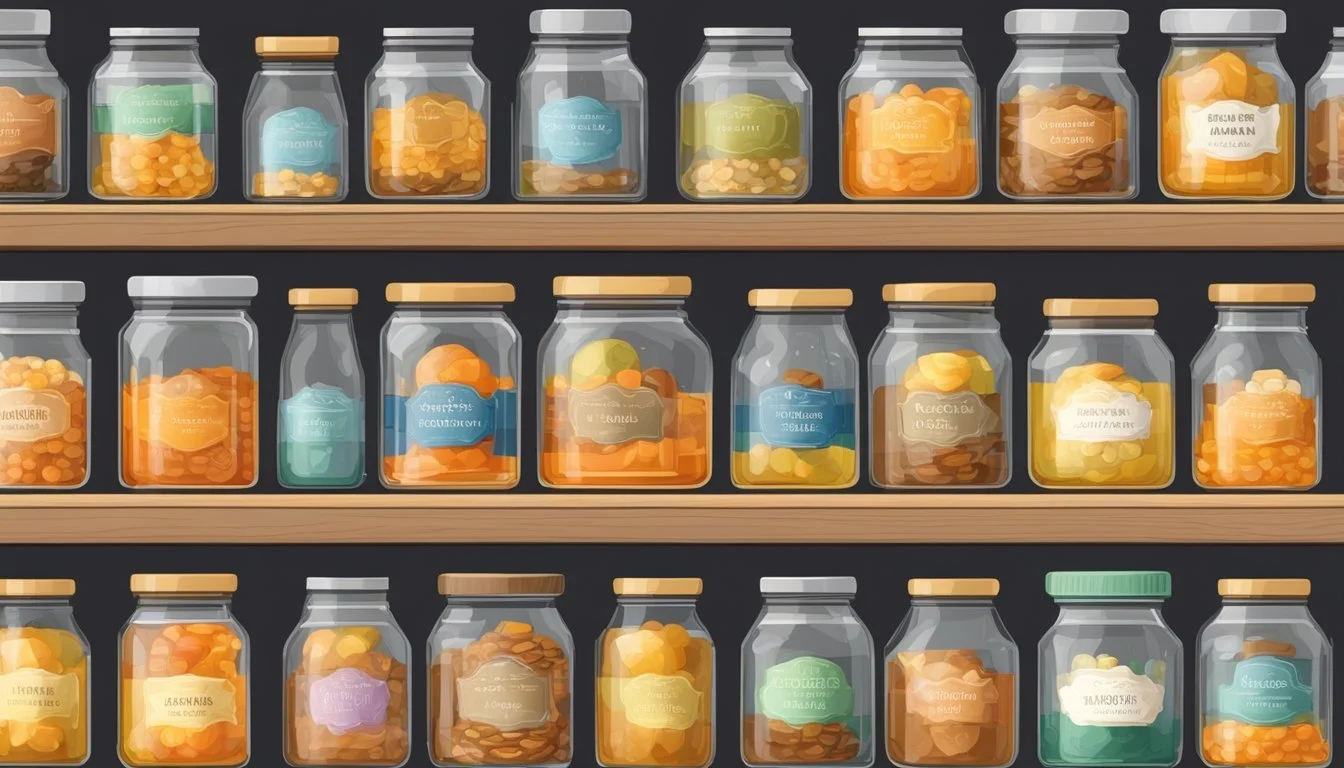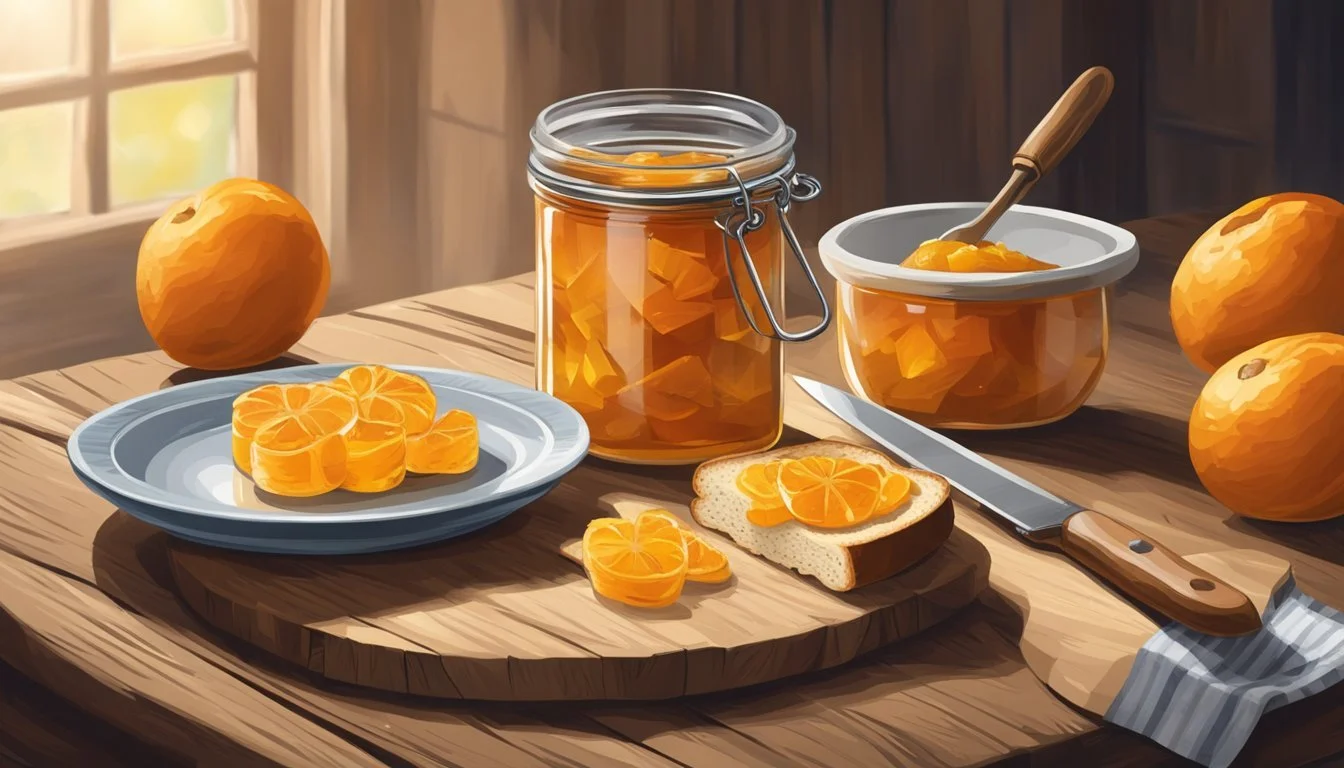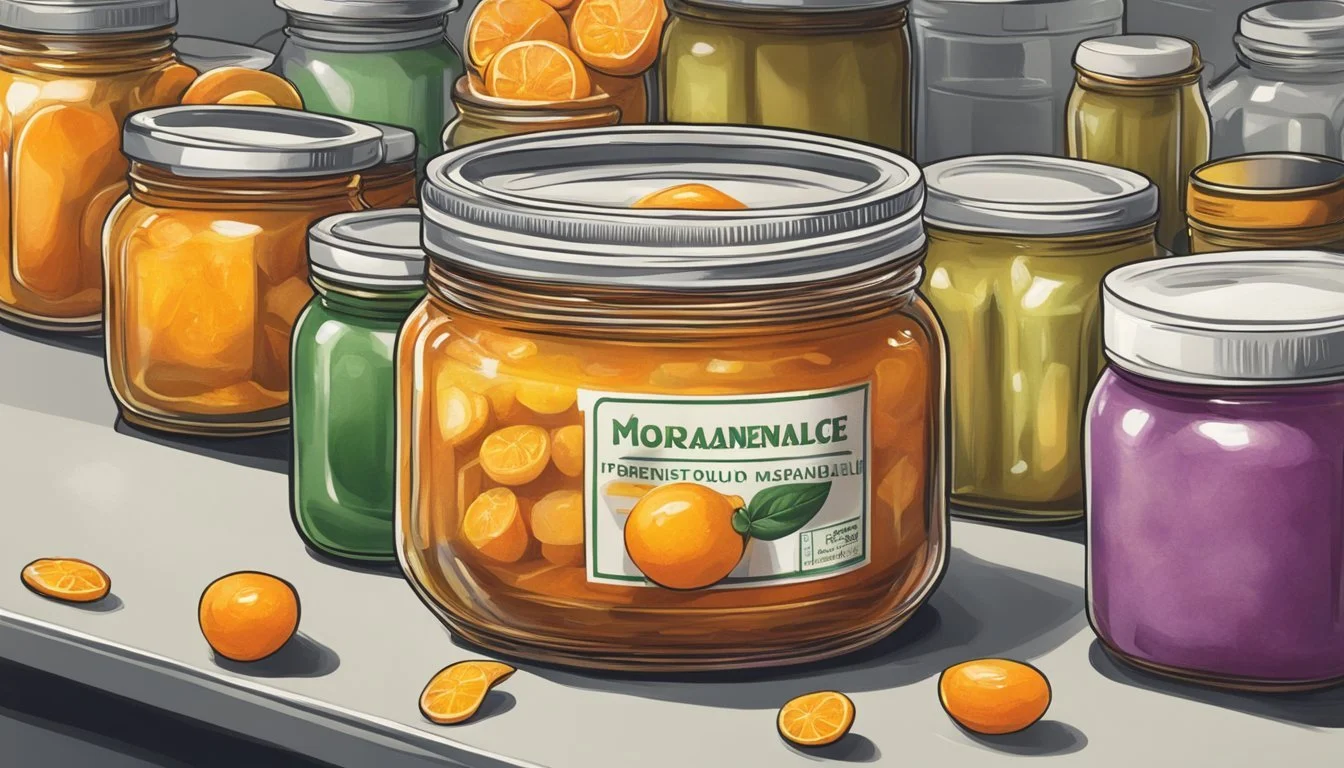Does Marmalade Go Bad?
Shelf Life and Storage Tips
Marmalade, a delightful spread made from citrus fruits and sugar, is a pantry staple in many households, but does it go bad? Like most food products, marmalade has a shelf life that can be influenced by several factors such as storage conditions and its ingredients. Typically, an unopened jar of marmalade can last up to two years when stored in a cool, dry place.
Once opened, the shelf life decreases significantly. If stored properly in the refrigerator, marmalade can last up to six months. Beyond this period, marmalade may begin to lose its freshness and flavor, and there is a risk of mold or spoilage. It's essential to keep an eye out for signs of spoilage, such as off odors or changes in appearance.
Whether you're a marmalade lover or an occasional user, understanding its shelf life can help you make the most out of every jar. By storing it correctly and knowing when it's time to part ways, you can enjoy this sweet, tangy spread at its best.
Understanding Marmalade
Marmalade is a sweet and sometimes bitter fruit preserve made predominantly from citrus fruits. This section explains the key ingredients and types of marmalade, as well as distinctions between homemade and commercial variations.
Ingredients and Types
Marmalade primarily uses citrus fruits like oranges, lemons, limes, grapefruit, and their variants such as Seville oranges and blood oranges. Beyond the fruit, sugar and water are core components. Pectin, a natural gelling agent found in citrus peels, is crucial for achieving the desired texture.
The flavor profile can range from sweet to bitter, depending on the fruit and recipe used. Some popular types include sweet orange marmalade and bitter Seville orange marmalade. The inclusion of different citrus fruits can create unique blends, like orange-lemon marmalade.
Homemade vs Commercial Marmalade
Homemade marmalade allows for customization in both flavor and sweetness levels. Individuals can choose organic ingredients, minimizing the use of preservatives. The cooking process involves simmering the fruit mixture until it reaches the right consistency, yielding a fresher taste.
Commercial marmalade often includes preservatives and ensures a longer shelf life. Brands may also standardize their recipes for consistent flavor and texture across batches. Commercial varieties might lack the personalized touch of homemade versions but offer convenience and reliability.
Shelf Life and Quality Indicators
Marmalade's longevity and quality are influenced by factors such as storage conditions and whether the jar is opened or unopened. Visual and textural changes often signal when marmalade has surpassed its peak quality.
Visual and Textual Changes
Color changes: Fresh marmalade typically has a bright, vibrant color. If the marmalade darkens significantly, it could indicate it has aged past its best before date.
Texture: Marmalade should spread easily. If it becomes overly thick or develops a crystallized form, this can be a sign of aging or improper storage.
Appearance: Look for signs of mold or unusual texture, which usually indicate spoilage.
Odor: Fresh marmalade has a sweet and tangy aroma. A sour or off smell is a clear warning that the marmalade is no longer good.
Unopened vs Opened Marmalade
Unopened Marmalade: When stored in a cool, dry place, unopened marmalade generally maintains its peak quality for about two years. It's recommended to adhere to the best by date, though marmalade may still be safe to eat beyond this date if no spoilage signs are present.
Opened Marmalade: After opening, marmalade should be refrigerated to preserve its quality. Experts recommend consuming it within six months. Keeping the jar tightly sealed can help maintain its flavor and texture.
Storage Conditions: Proper storage, such as keeping the jar in a dark, cool place and ensuring it is sealed, plays a vital role in extending shelf life and ensuring the quality of the marmalade for as long as possible.
Proper Storage Techniques
Effective storage is essential to extend the shelf life and maintain the quality of marmalade. Key practices involve proper placement in a pantry, as well as using refrigeration and freezing when necessary.
Room Temperature and Pantry
Marmalade should be stored in a cool, dark place like a pantry. Unopened jars can last up to two years when kept away from direct sunlight and extreme temperatures. To ensure best quality, place them in a dry area to prevent moisture-related issues. Always check the jar for any signs of damage or bloating, as these could indicate compromised safety.
Refrigeration and Freezing
Once opened, marmalade should be refrigerated to maintain its freshness. Properly sealed, it can last up to six months in the refrigerator. Ensure lids are tightly closed to avoid the introduction of air, which can lead to spoilage. For longer-term storage, marmalade can be frozen. Use airtight containers to prevent freezer burn. When ready to use, thaw it in the refrigerator for best results.
Health and Food Safety
Proper storage and handling of marmalade are essential to prevent spoilage and health risks. Recognizing the signs of spoilage and understanding the risks associated with mold and bacterial growth are critical for ensuring the marmalade is safe to eat.
Recognizing Spoilage and Risks
Marmalade can remain safe to consume for several months once opened if stored correctly. However, spoilage can occur. Key signs of spoilage include an off-smell, changes in texture, and discoloration. If a jar emits a fermented smell or shows unusual separation of ingredients, it should be discarded immediately.
High-acid content in marmalade helps deter some bacteria, but it’s not foolproof. Consuming spoiled marmalade can lead to foodborne illnesses, with symptoms such as vomiting and indigestion. Therefore, it’s crucial to regularly inspect stored marmalade for any spoilage signs.
Mold and Bacterial Growth
Mold can develop on the surface of marmalade, especially if it is stored improperly. Mold growth is visible as fuzzy patches and can vary in color. Mold spores can spread throughout the jar, making it unsafe to simply scrape off the visible mold. The entire jar should be discarded if mold is present.
Bacteria thrive in moist environments, and marmalade's water content can support bacterial growth if not stored in airtight conditions. Growth of bacteria may not always be visible, yet it poses a significant health risk. Always ensure jars are sealed tightly and stored in a cool, dry place to minimize risk. If in doubt, it is better to err on the side of caution and discard potentially unsafe marmalade.
Extending Shelf Life through Preservation
Marmalade, like other preserves, can have its shelf life extended through careful preservation methods. Key techniques include the use of sugar and pectin as well as freezing and canning to ensure it remains fresh and safe to consume over an extended period.
Use of Sugar and Pectin
Sugar is essential in preserving marmalade. It acts as a natural preservative by reducing water activity, which limits the growth of bacteria and mold. High concentrations of sugar create an environment where microorganisms cannot thrive.
Pectin, a natural thickening agent found in fruits, also plays a critical role. When combined with sugar and acid, pectin forms a gel-like structure that helps maintain the texture of marmalade, preventing the separation of ingredients. Properly balanced sugar and pectin levels are crucial for both taste and longevity.
Ensuring marmalade cools properly and is stored in airtight containers will further prevent spoilage and enhance shelf-life.
Freezing and Canning
Freezing is a straightforward method to preserve the freshness of marmalade for longer periods. When marmalade is frozen, microbial activity ceases, and the preserve retains its flavor and nutritional value. It’s important to store marmalade in freezer-safe containers and leave some space to avoid bursting due to expansion.
Canning, through methods such as water-bath canning, involves sealing marmalade in sterilized jars at high temperatures. This process destroys bacteria and seals the marmalade in a vacuum, preventing new bacteria from entering. Canned marmalade can last up to a year if stored in a cool, dark place.
By employing these preservation techniques, marmalade can remain a coveted staple in the pantry for extended periods.
Use and Application of Marmalade
Marmalade has a variety of uses that extend beyond merely being a spread for toast. Its versatility makes it a staple ingredient in both sweet and savory dishes.
Culinary Uses
Marmalade is often used in baking to add a touch of sweetness and citrus flavor to various recipes. It can be incorporated into cakes, muffins, and pastries. For instance, adding marmalade to a sponge cake batter can create a deliciously moist and flavorful dessert.
In cooking, it serves as a glaze for meats. Many chefs use marmalade to coat poultry, such as chicken or duck, to create a sweet and slightly bitter glaze. This not only enhances the flavor but also adds a beautiful caramelized finish.
Another inventive use is in sauces and dressings. Blending marmalade with mustard or balsamic vinegar can create delightful dips or salad dressings that are both sweet and tangy.
Pairing Suggestions
Marmalade pairs exceptionally well with toast and various types of bread. A simple slather of marmalade on warm toast brings out its rich, citrus flavors, making for a classic breakfast option.
Combining marmalade with cheese yields delicious results. Spread over a slice of sharp cheddar or creamy brie, marmalade balances the cheese's savory notes with its sweetness and bitterness. This pairing is perfect for an elegant cheese board or a casual snack.
Additionally, marmalade works well with yogurt and granola. Incorporating it into a breakfast parfait adds a refreshing citrus zest, elevating the overall flavor profile. This combination is both nutritious and delicious, ideal for a morning or mid-day snack.
By utilizing these diverse applications and pairings, marmalade can be a versatile and indispensable component in any kitchen.
Identifying and Handling Expired Marmalade
Expired marmalade can pose health risks if not identified and handled correctly. Key indicators such as mold growth, off-odors, and discoloration help determine whether the product should be consumed or discarded.
Signs of Expiration
Mold Growth: The presence of fuzzy spots that can be green, black, white, or blue clearly indicates that the marmalade is unsafe for consumption. Discoloration: A noticeable change in color often signals that the marmalade has deteriorated. It may turn darker or develop an unusual hue. Off-Odors: If the marmalade emits a strange or sour smell, this is a warning sign that it has spoiled. Fermenting: Any signs of bubbling or a yeasty smell hint at fermentation, making it unsafe to eat.
When to Dispose
Visual Inspection: Always initiate with a thorough visual examination. If there is any mold or unusual color, the marmalade should be discarded immediately. Smell Test: Should the marmalade have any off or sour odor, it must not be consumed. Taste Check: If the visual and smell tests are inconclusive, a small taste can help. If it tastes off, spit it out and discard the jar. In all cases of doubt, safety should be the priority, and the marmalade should be thrown away to avoid potential health risks.








